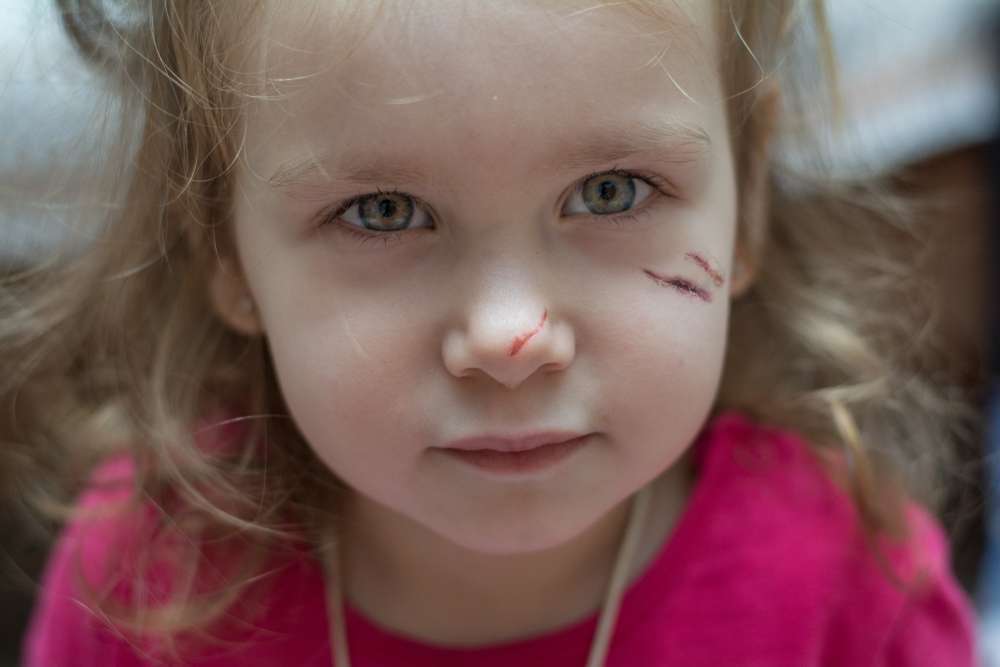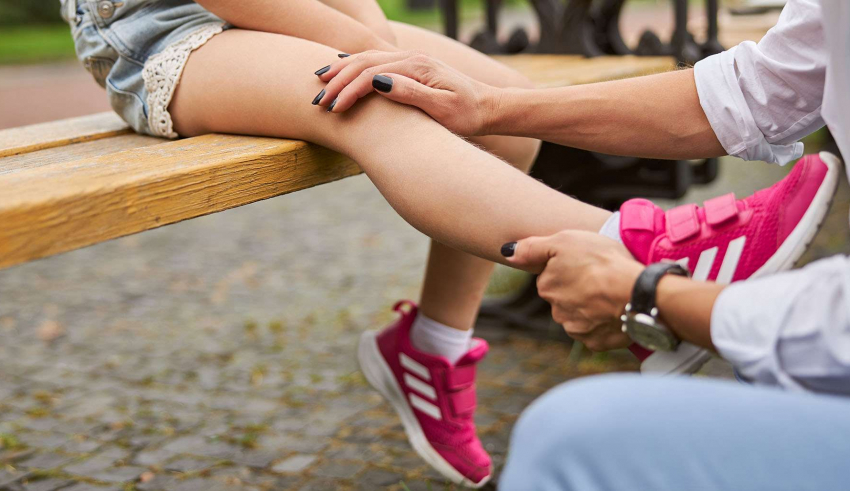
No wonder parents lose their minds when their child falls on the ground and gets hurt. These are justified concerns for a wound that often takes too long to heal and could leave behind a scar that could easily accompany your child forever. No need to panic! The Dermo Lab brings you this article about scars in children and how to treat them in collaboration with the paediatrician, Dr. Pierre Hajj.
How Do Scars Form in Children?
A scar is the first thing you should see coming after your child cuts himself or herself. Why? Dr. Pierre Hajj explains that after an injury, your child’s skin begins to repair itself through collagen found in the connective tissue. Within a few days, you start noticing an improvement in the wound healing process.
As the healing progresses, the top layer of the wound dries up, forming a dry, rough crust called a scab. So, when your child’s skin heals completely, the scab falls off, leaving behind the repaired skin which often looks different from the surrounding skin, and this is known as a scar.
However, not all wounds leave scars. With proper care and hygiene, wounds could heal without leaving any trace on your child’s skin.
Why do Scars Get Bigger?
According to Dr. Pierre Hajj, if you notice that your child’s scar is getting bigger, you must consult a doctor to check if your child has one of the following two types of scars:
– Hypertrophic scars: These scars form as wounds heal, and range in color from pink, red to purple. These raised scars develop within the boundaries of the original wound.
– Keloid scars: The difference between hypertrophic and keloid scars is that the latter extend beyond the original wound borders, develop above the skin surface, and have irregular shapes. Keloid scars’ color also ranges from pink, red to purple.
Treating Scars in Children
Small scars are likely to disappear on their own, so you should never worry about them. However, some deeper scars require special care and medical consultation to determine the most appropriate treatment. Here, Dr. Pierre Hajj recommends several treatment methods you can adopt:
1- Topical treatments: You can use certain creams and ointments rich in vitamin E and oils designed to improve the appearance of scars and reduce their severity.
2- Pressure dressings: There are specific types of compression dressings used to treat scars, as they reduce their size and prevent the occurrence of a keloid scar that extends beyond the wound’s borders.
3- Laser treatment: You can opt for laser treatment to remove the upper layers of the scar, flattening it. In this case, you should rely on the specialist’s decision as to whether laser treatment will be effective or not, depending on the depth of the scar.
4- Injections: Corticosteroid injections can be used to reduce the size of the scar and improve its appearance. This treatment is often used for keloid and hypertrophic scars.
5- Scar surgery: Your child may undergo specific surgical procedures to improve or reduce the appearance of the scar.
6- Scar removal: If your child suffers from a hypertrophic or keloid scar, you can opt for this solution. This technique can also be used if the scar is caused by a burn.
7- Silicone sheets or gels: if your child’s scar is due to a burn, you can treat it with silicone sheets or gels.
8- Cryotherapy: In this case, liquid nitrogen is used to freeze scars and remove them.
Additional Treatment Steps
Now that you are familiar with the medical aspect of scar treatment, you should know about the complementing steps you can take at home to stimulate the healing process, especially if the scars are small and natural looking. According to Dr. Pierre Hajj, the measures are as follows:
1- Rely on natural ingredients: There are many substances that can help treat scars naturally, such as aloe vera, coconut oil, tea tree oil, cocoa butter, honey, apple cider vinegar, lavender oil, and olive oil. These ingredients have long been relied upon to improve the appearance of scars.
2- Apply sunscreen: Since damaged skin is more prone to discoloration when exposed to the sun, make sure to apply sunscreen to your child’s skin for 6 months after the injury. This speeds up the healing process while preserving the natural color of the skin and reducing the appearance of scars.
3- Massage the scar: The scar can be effectively softened and flattened when massaged. Simply squeeze it a little with your fingers and then massage it in a circular motion. Repeat this process more than once a day for a noticeable result.
To further help you provide the best care for your child’s delicate skin, we introduce you to a collection of must-have products from the French brand A-derma. The following products complement each other to heal scars in children:
– Cytelium Drying Spray: Use this drying spray for irritated skin immediately after cleansing to soften and dry skin prone to infection (moist areas of the body, skin folds …). On top of that, you can trust this spray for your little one since it is composed of 99% natural ingredients.
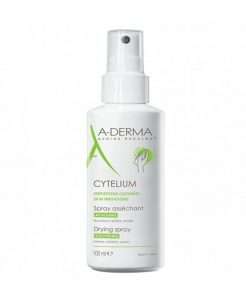 – Dermalibour+ Repairing Cream: Apply this therapeutic cream to soothe and stimulate the epidermal repair of dry, irritated and fragile skin. Its smooth and non-occlusive texture makes it indispensable for taking care of small everyday scrapes and scratches.
– Dermalibour+ Repairing Cream: Apply this therapeutic cream to soothe and stimulate the epidermal repair of dry, irritated and fragile skin. Its smooth and non-occlusive texture makes it indispensable for taking care of small everyday scrapes and scratches.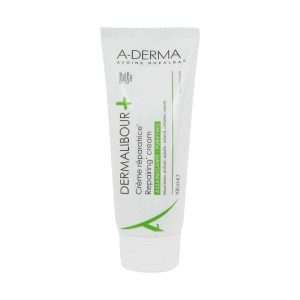 – Epitheliale AH Ultra Soothing Repairing Cream: Use this soothing and repairing cream to prevent the appearance of scars after your child’s cuts. Thanks to its formula rich in 94% natural ingredients, it promotes rapid skin repair and reduces the appearance of scars in addition to soothing the skin.
– Epitheliale AH Ultra Soothing Repairing Cream: Use this soothing and repairing cream to prevent the appearance of scars after your child’s cuts. Thanks to its formula rich in 94% natural ingredients, it promotes rapid skin repair and reduces the appearance of scars in addition to soothing the skin.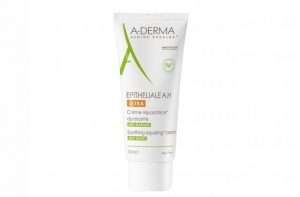
Last Updated on February 16, 2024
